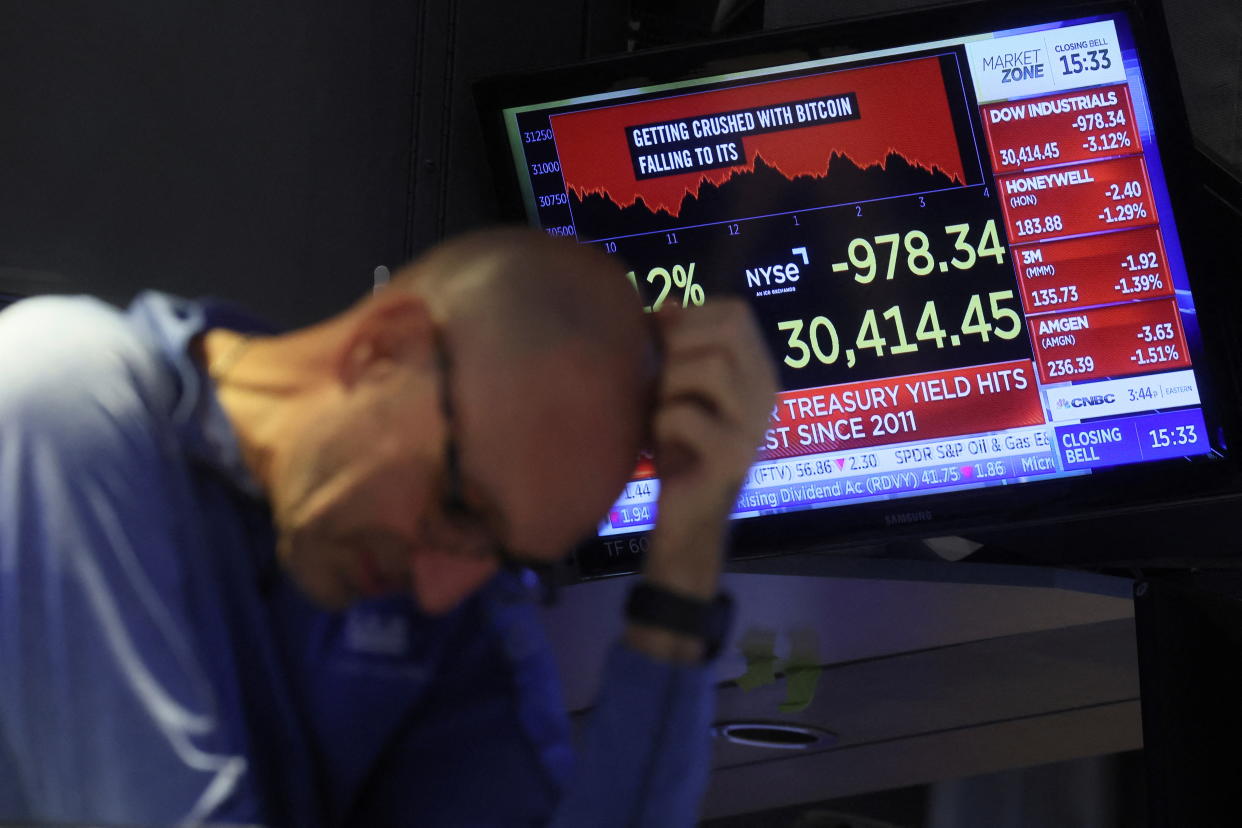Early retirement devotees rethink assumptions after 'dicey times'
When Sam Dogen retired in 2012, he was just 34. An early member of the Financial Independence, Retire Early or "FIRE" movement, he dedicated his time to travel and working on his blog, Financial Samurai, among other pursuits.
But now, the early retirement pioneer is going back to work. The 529 education accounts he set up for his children, born in 2017 and 2019, took heavy hits when the bond market performed badly in 2022. Now, as he eyes the future, he’s worried his investments won’t cover the costs of their education. So, he’s decided to find a job to supplement his income.
"There's all these variables that are unknown," Dogen said. "It really seems like it's dicey times right now. And it always feels better to take action instead of just, you know, count on luck, right?"
The FIRE movement emerged in the 2010s, offering Americans a path to early retirement, but post Covid, the bear market has jeopardized Americans' investments and high inflation has decreased the purchasing power of their savings. Consequently, many participants in the FIRE movement are re-examining their early retirement plans.

'Blindsided by the actual extent to which inflation hit'
Michael Sangirardi, a private wealth advisor who serves as president at FutureFWD Advisors, said many of his clients are remaining employed and foregoing early retirement.
"I think people were blindsided by the actual extent to which inflation hit…I mean, we haven't seen that level of inflation. And many, many years ago, I don't think most FIRE savers really prepared for that," Sangiradi said. "You know, having a market that's down over 20% is not something that people often prepare for either."
Some FIRE retirees have it worse than others, said Tanja Hester, a FIRE movement leader who retired at 38.
Hester distinguished between "lean fire" and "fat fire" retirees. While "fat fire" participants rely on robust savings to retire early, "lean fire" retirees elect to live frugally and subsist on minimal funds. It's the investments of lean FIRE participants that aren’t keeping up with inflation.
"You've got some folks on that end of the spectrum who say, 'Okay, we're gonna save 25 times our annual spending, and not a penny more,'" Hester said. "And I think for those folks, they're probably getting pretty hammered by inflation right now."
'Need to be planning for at least 3%' inflation

Still, Hester and Dogen say people who aspire to retire early can implement strategies to survive high inflation and the down market. In particular, they can plan for high inflation going forward, increase their savings, and invest conservatively.
Hester, who has long advised aspiring early retirees to factor inflation into their financial plans, pointed out that many retirees have been "spoiled" by the decades of low inflation leading up to the pandemic. She said FIRE participants can start by assuming higher inflation rates going forward.
"We need to be planning for higher inflation all the time. If anybody thinks after this, going back to your financial plan that assumes 1% inflation is reasonable, I would like to have a talk with them," Hester said. "We need to be planning for at least 3% for the long term."
Dogen, meanwhile, pointed out that while inflation has adversely affected fixed income investments, the Federal Reserve has been increasing interest rates since 2022. As a result, retirement savers can secure higher treasury bond yields, CD interest rates, and money market funds.
"So it's actually easier to generate more passive income right now in a bear market and a higher interest rate environment," Dogen said.
Dogen recommends adopting strategies to invest successfully amid high inflation. In particular, he recommends savers invest in risk assets like stocks and real estate.
"To me, real estate is the best inflation hedge. Why? Because… it's part of inflation," Dogen said. "So if you own real estate, you're benefiting from the tailwind of inflation going up which means you can charge higher rents, for example, and your property is usually increasing in value, thanks to inflation."
Rethinking the 4% rule

The FIRE movement, like other retirees, have traditionally followed the "4% rule.” That’s the percentage they plan to spend from their portfolio during their first year of retirement. In the following the years, they adjust for inflation.
But according to Sangirardi, it might be time for early retirees to adopt a different approach, saying he sees a need for "a bit more savings, a bit more accumulation because of this inflation."
"I think the 4% rule through the FIRE movement has often been used as sort of the barometer of safety," Sangirardi said. "And once established, people really grabbed on to it as a way of 'I need to make sure that I don't take more than this 4%.' I think there are moments that happen that force us to take more."
According to Hester, FIRE movement participants have long suffered from "one more year syndrome," a phenomenon in which they put off retirement to save at least one more year’s worth of money. But amid unpredictable economic circumstances, Hester said that might be not be such a bad idea.
"It's like, okay, COVID was a once-in-a-lifetime event," Hester said. "Hopefully, that was. But other things are out there that could cause similar conditions. So just giving yourself a cushion, wherever you can."
She also recommended that investors be wary about risky investment trends like cryptocurrency, advising them to make such investments on 5% to 10% of their portfolio at most.
"I think a heavy dose of risk aversion is good and we've all just been through a good multi year seeing that with no end in sight," Hester said. "And I hope people — whenever this is over, if it's in six months or five years — that folks won't forget this lesson. Like, treat this as gospel you carry forever."
Dylan Croll is a reporter and researcher at Yahoo Finance. Follow him on Twitter at @CrollonPatrol.
Read the latest financial and business news from Yahoo Finance
